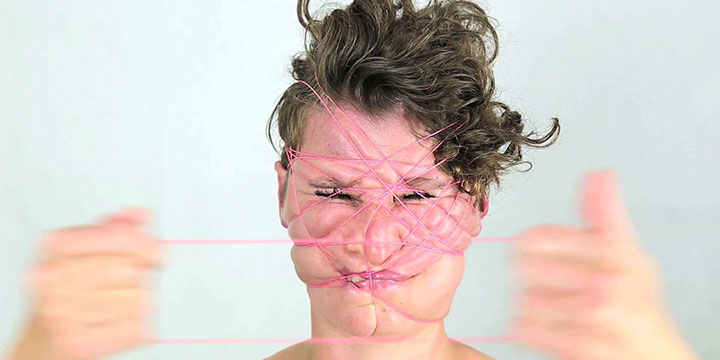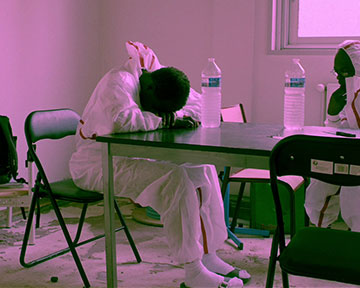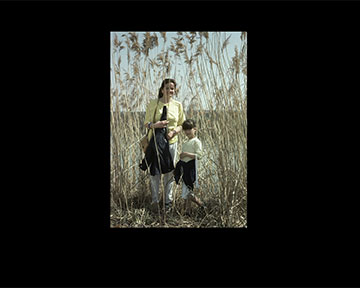The exhibition „Something Between Us“ focuses on both our contemporary lives and the anthropological constants of interpersonal dealings: love, empathy, security, care and safety on the one hand, and hate, role fixation, dependency, reprimand and exclusion on the other. Something Between Us asks how these structures of togetherness are changing in our digital era. Can social and cognitive relationships be established with non-human protagonists and how are these connections changing relationships between two humans. Does this also transform our concept of living and the metaphor of life and death? Is there still a private sphere when not only our material needs but also our being and actions become more and more transparent via our internet activities? The 1968 movement had already discussed the politics of the personal. Today, this question is posed from a different perspective even though the most intimate spheres are shaped by an increasing neoliberal pressure to optimise ourselves, and we are constantly confronted with the publicity-effective staging of “private” life.
KAI 10 | ARTHENA FOUNDATION, Düsseldorf
Thomas Taube
OCCIDENT, 2020
Installation with film
and sound (30:47')
Courtesy the artist
The question of what we can and want to see or consciously do not want to perceive is central to Thomas Taube’s film essay OCCIDENT. In parallel and collage-like visual and narrative layers, he links the threat and danger of the invisible substance, asbestos, with Eadwaerd Muybridge’s 19th-century photographs of human movement. His systematical analysis of individual body movements is historically linked to the exploitation of industrial workers. At the same time, a report by a present-day French asbestos removal company can be heard stating that this type of work is mainly carried out by migrant workers. As a whole, OCCIDENT is a visually stunning reflection on the instrumentalisation of the human body and how society deals with physical danger: a manner historically linked to the history of colonialism, which also plays a role in Muybridge’s photos. These photos were produced at the time when asbestos was first used on a larger scale.
Teboho Edkins
Gangsters backstage, 2013
37:30 min
For Teboho Edkins (*1980 in Tennessee/USA, lives in Berlin), the processes of social inclusion and exclusion are a constant theme. He advertised for gangsters to play a role in his crime film, Gangster Backstage. The aim of these “castings” was to find people who would not play a role but simply play themselves. Shown alongside photographs of the protagonists, the film consists of recorded discussions with the “applicants”, whose own, often hard lives, shaped by crime and prison sentences, are reviewed in the visitor’s mind. The impression arises, nevertheless, that the protagonists are describing fictitious film scenes.
Luzia Hürzeler
30 Jahre (April 1984 und 2014), 2015
Installation with slide projection and sound (8:08') Courtesy the artist and
Galerie Gisèle Linder, Basel
Luzia Hürzeler’s installation 30 Years (April 1984 and 2014) in Something Between Us also deals with the appearance and disappearance of images. The artist has reproduced a thirty-year-old slide. It shows her as a child next to her elder sister. Their father had taken the photo, Luzia Hürzeler asked him to take the second photo as well. The voice offstage describing the first image also belongs to the father. The two slides are projected one after the other onto a screen; the current image slowly replaces the old one. The formal and compositional similarities of the photos make the changes in the appearance of the women even more explicit. Through the direct juxtaposition of the images, the intention to repeat an old photo and bring back a long-lost time becomes a patently absurd undertaking.





























